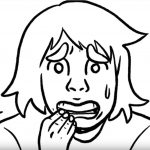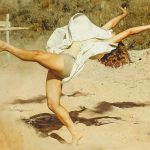Recently a client wrote asking me
“whether craniosacral is considered energy work, or is there more of a science-oriented theory to it? . . . some effects of acupuncture can be explained physiologically, the traditional understanding of influencing a person’s energy has a way of taking away its legitimacy in a western medicine oriented society. I. . . have been left wondering how someone can use energy to help someone else. Because I personally had an emotional release with energy work, I know it can happen. I’m hoping you can tell me if all CranioSacral therapists work the same way, or do some use the “energy” element? And what is your approach?”
The following is my response.
I think much depends on the school and level and kind of training a person has had. Each school has a space-time (social and political) context and there is the inevitable process of branching and growing off. I am Upledger institute trained but have worked with the Biodynamic folks and the Milne school. All schools spring from the same source, each approach is different but at the upper levels, all roads seem to intersect and carry the intent of the source Dr. Sutherland and Dr. Franklyn Sills.
In CranioSacral therapy we are working with a system that affects the autonomic nervous system, the muscular system, the organ system, the fascial system, and the endocrine system. So your electrical, chemical, systems as well as emotional containers are affected. Electrical and chemical charges are energy.
With the Upledger training, Dr. John really wanted the work to be accepted by the Western medical community so he spent time putting the training together first from the physiological perspective. Doctor Upledger explains the reason for this protocol approach is that people he was working with were asking him for a step by step approach.
The first 2 levels of UI training are very structural and technical -[where to put your hands – what is under them – that is, knowing the anatomy – nerves, bones, veins, arteries, endocrine and organ connections, listening for the CranioSacral Rhythm, how to use it as a guide, learning techniques to facilitate healing and signs of tissue release.] We also learn the history of Osteopathy and how the techniques came into being.
The protocol approach is often called mechanistic by those who do not know the upper levels of the Upledger training. This training involves treating the whole being, which includes acknowledging and working with our emotional and spiritual natures.
This protocol approach ensures that less adept practitioners have a scaffold to work from that supports a person’s innate healing abilities. If a therapist is not comfortable working with energy of any sort, or dialoguing with tissue, they can stay with the physiological approach and achieve very effective results.
As a therapist gains experience the protocol can act as an assessment tool to support the direction a session will go. The session is always led by the person on the table, not the therapist, who acts as a facilitator. This is an important factor in treatment.
The techniques act as a set of “supplies” from which the practitioner can draw for each person they work with.
After techniques are learned, cellular consciousness and the concept of the “Energy Cyst” is introduced. An Energy cyst is an encapsulated area of foreign chaotic energy that the body walls off in an attempt to keep it separate from the rest of the tissue. It can’t actually keep it separate because the energy is in the tissue.
The encapsulated energy can be from a myriad of sources, physical, mental or emotional stress. Energy Cysts are active lesions and have arcs rippling from them, which is why they are tiring.
This model explains how Energy cysts block circulation, meridians, chakras. Because Dr. Upledger was an acupuncturist, Upledger training teaches how to work with meridians and chakras, clearing and balancing these fields if needs be.
The “energy cyst” is a model for understanding when we as therapists feel something foreign and disruptive is there – something that is not that person. I use the analogy of a needle in the gums or the arm. Our body tries to dissipate the force of the intrusion, if it can’t do it, it puts it away, walls over it. In the gums, it feels like a little bump, or in the arm, where the needle entered it can feel kind of like keloid scar tissue. In the belly it may feel like a ball that is hard. The walling off uses fascia to create this ‘bumpy sensation.’
What is important to acknowledge is the emotional state of the person we work with. How a person feels about getting needles is really important and affects how a person responds to the intrusive force. The emotional condition will impact the physical response and holding in fascial tissue.
A technique called arcing finds energy cysts – as therapists, the primary lesion tends to be the one that comes first to our awareness.
What makes the Upledger training different from the Milne and Biodynamics approaches is the concept of the SomatoEmotional Release. This is a global approach to the person and incorporates talking the person and to the woundings.
The practitioner, using the tissue as the medium, dialogues – out loud or nonverbally – with the part that is holding the pain or larger story. What is not there is equally important. Numbness, lack of feeling, lack of sensation is a different kind of holding, and acknowledges something is walled off. As a therapist I aim to support the person coming back into healthy sensation and connecting with feelings. So naming and claiming what may have been unknown is important in the healing process.
The Biodynamic approach is more energetic in its training and so may feel esoteric to some – the Franklyn Sills website explains the following:
The Long Tide is the root of what Sutherland called primary respiration and is a key perception in a biodynamic approach. The Long Tide is a direct expression of the creative intention of the Breath of Life and is the most formative expression of primary respiration. It seems to arise from “nowhere”, manifests like a great wind arising within a vast field of action and radiates through everything. It generates local ordering fields that, in turn, mediates embryonic development, ignites an ordering potency in the fluids of the body and maintains cohesiveness and balance throughout life. The Long Tide is known in many cultures. The Tibetans call it the Unconditioned Winds of the Vital Forces. It is “unconditioned” as it is not affected or conditioned by our personal experience. It maintains the creative intention of the Breath of Life as an organizing principle no matter what conditions are present.
The Bioenergetic approach spends a lot of the training in listening deeply to the tides and rhythms of the system. It is true to the final years of Sills’ work.
The Milne approach springs from Hugh Milne’s explorations of spiritual traditions and incorporates the western medical model. He calls it Visionary CranioSacral therapy.
From the Milne website we read the physiological facts; “The craniosacral system includes the brain, the cerebrospinal fluid, the system of membranes inside the cranium, all 22 cranial bones, the spine and the sacrum.” Then the following
What the Navajo call ‘the wind’s child,’ Genesis calls ‘the breath of life.’ It is a silent force, a field of chi, which blows through the craniosacral system, animates it, and infuses it with information and intelligence.
It is possible to listen to this field. The ability to do this is called ‘the heart of listening.’
A visionary knows how to touch a client with precise and gentle contacts that help the client feel more aligned, and more at home in themselves. Sometimes, by touching just the right place in just the right way, a visionary can help the client understand what troubles them, and what they need to reclaim their equanimity, and their place in life. Such work can also help the client access and release their healing potential.
The Milne Institute offers an avocational, in-depth training in the heart of listening, a visionary approach to craniosacral work. This may mean that students may not be eligible for certain kinds of CEU or vocational credit. What we offer is continuing education, not vocational education . . .
If you want to go deep, be deep.
So yes, your experiences of energy being released in a craniosacral session is accurate because CranioSacral therapy encompasses both physiological and energetic praxis. I hope this explanation is in depth enough for you. I realise I may have answered more than you were asking – I was responding to the physiotherapist in you – and liked the exploration.










